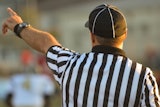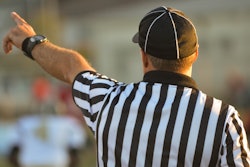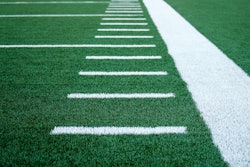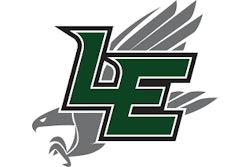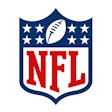![[Illustration by Arnel Reynon]](https://img.athleticbusiness.com/files/base/abmedia/all/image/2018/08/ab.Legal718_feat.png?auto=format%2Ccompress&q=70&w=400)
Intercollegiate football is an exciting but violent sport. A school can employ qualified coaches and medical personnel, and use injury waivers to protect itself from liability. However, failure to meet industry standards for student-athlete care will likely bring litigation in the event a player sues over treatment of injuries suffered on the field. This is evident in the ongoing case of Feleccia v. Lackawanna College, 156 A. 3d 1200 – Pa: Superior Court 2017.
The injuries
On March 29, 2010, Augustus (Gus) Feleccia and Justin T. Resch participated in a tackling drill during the first day of spring football practice at Lackawanna Junior College in Pennsylvania. Both players were injured during a variation of the Oklahoma drill, during which an offensive player is isolated against a defensive player in a confined space. The offensive player tries to run past the defensive player without being tackled.
The Oklahoma drill is recognized as one of the most violent practice drills, especially the variation used by Lackawanna. This drill emphasizes proper pad level and ball security for the offensive player, and proper block shedding and tackling technique for the defensive player, but often results in a vicious collision.
While involved in this drill, Resch attempted a tackle with his head down and suffered a T-7 vertebral fracture. Normally the football program would have two certified athletic trainers assigned to its practices. However, this session had two non-certified "first responders" instead. Resch was evaluated by a Lackawanna first responder, then was transported by ambulance to a hospital.
The tackling drill continued. Feleccia suffered a "stinger" to his right shoulder during his first tackling attempt. A second Lackawanna first responder told him that he could return to practice once he began feeling better. Feleccia returned, made a tackle with his right shoulder, then suffered a brachial plexus avulsion on his right side.
After the players sued, the trial court entered a summary judgment in favor of the college. This ruling was supported by the fact that the players had signed injury waivers and assumed the risk of injury by participating in the violent sport of football. On appeal, the players asked the court to rule on two issues:
1. Is a Pennsylvania college required to have qualified medical personnel present at intercollegiate athletics events to satisfy a duty of care to the college's student-athletes?
2. Is an exculpatory clause releasing "any and all liability" signed in connection with participation in intercollegiate football enforceable as to negligence?
The issues
First, the plaintiffs asked if the college is required to have certified medical personnel at practices. Led by athletic director Kim Mecca, Lackawanna hired Kaitlin Coyne and Alexis Bonisese in August 2009 to serve as certified athletic trainers.
At the time each was hired, neither Coyne nor Bonisese was licensed or credentialed as an athletic trainer. Mecca designated the two as first responders, but they were assigned job responsibilities typically granted to athletic trainers. Moreover, neither Coyne nor Bonisese had earned their athletic training credentials by the time of the athletes' injuries, yet court testimony revealed that Coyne, Bonisese and the football coaching staff represented the first responders as athletic trainers. In addition to being inexperienced and without credentials, the court heard testimony from a former professor and an internship supervisor that expressed concern regarding both Coyne and Bonisese's ability and potential work performance.
The college argued that there is no law in Pennsylvania or standard in the National Junior College Athletic Association requiring that certified athletic trainers be present at practices. The college also contends it did not have sufficient funds to hire qualified athletic trainers. In fact, Lackawanna Junior College president Dr. Ray Angeli said he was unwilling to pay an athletic director a salary higher than that of a first-year professor, but an athletic department budget analysis showed the funds were available.
Next, the plaintiffs questioned the validity of the waiver. To be valid, a waiver must not violate public policy, must be between persons relating entirely to their own private affairs, and each party must be a free bargaining agent. In common terms, a waiver is scrutinized based on its context and its content. The context refers to font size and where the waiver appears — a court may choose not to accept a waiver written in very small type and hidden within a large contract. The content refers to the language itself. The waiver should contain clear language that is easily understood by the participant.
Prior to spring football tryouts, both Feleccia and Resch signed the "Lackawanna College Waiver and Hold Harmless Agreement." Among its provisions, the signer relinquishes the right to sue "for any and all liability." The plaintiffs argued that the language is not clear that Lackawanna's negligent acts are included in the waiver.
Although Resch testified that he understood that the Oklahoma drill might be used during practices, the plaintiffs argued that the requirement to participate in the drill does not include the use of the non-certified first responders. The college still had the duty to use qualified personnel to assess and treat foreseeable injuries to meet a reasonable standard of student-athlete protection, according to the plaintiffs.
Lastly, the plaintiffs argued that the assumption of risk theory does not cover the acts in this case. Generally, the assumption of risk doctrine protects a defendant when a plaintiff encounters a known or obvious danger but voluntarily engages in the activity anyway. The plaintiffs argued that while they may assume the general risks of playing football, they were unaware of Lackawanna's failure to provide qualified athletic trainers. This act could not be considered a known or obvious danger of participating in football.
At the trial court, the defense argued that the assumption of risk doctrine eliminated any duty for the college. The plaintiffs are experienced football players (Feleccia had been playing since age 10, Resch since age six) and acknowledge that football is an inherently dangerous sport in which injuries occur. Neither player testified that they were forced to participate or coerced into participating in the Oklahoma drill.
The outcome
The trial court entered a summary judgment for the defense. A summary judgment is appropriate only when the record clearly demonstrates that there are no genuine issues of material fact and the moving party is entitled to judgment as a matter of law.
The appellate court rejected that finding and stated that "colleges are expected to put a priority on the health and safety of their students, especially student-athletes engaged in dangerous sports." The summary judgment was overruled, and the case was remanded back to a trial court for a number of reasons.
Although courts generally accept a waiver for an inherently dangerous activity such as football, this specific waiver was rejected. First, the waiver did not state in clear and unambiguous terms that it would excuse Lackawanna's own negligent behavior.
Next, the waiver cannot be used as a shield against claims of recklessness or gross negligence. The Restatement (Second) of Torts (1965) states that recklessness is an unreasonable act that involves a risk of harm to others that is substantially more than negligent behavior. Thus recklessness is more similar to intentional conduct — which is not absolved via a waiver — than ordinary negligence.
Finally, the court stated the college's hiring and use of Coyne and Bonisese as athletic trainers fell below the applicable standard of care. This conduct should be considered gross negligence or recklessness.
Ultimately this court held that the college owed the players, who had engaged in school-sponsored and supervised intercollegiate athletics, a duty of care. This duty requires qualified medical personnel to assess injuries and adequately provide medical treatment when appropriate.
This case demonstrates that colleges owe a duty of care to student-athletes in terms of their safety and protection. Although a valid waiver may offer a school some protection, a court will also analyze the school's behavior and may determine that behavior to be more than simple negligence and thus allow the case to be heard at trial.
This article originally appeared in the July|August 2018 issue of Athletic Business with the title "Absence of actual athletic trainers may constitute negligence." Athletic Business is a free magazine for professionals in the athletic, fitness and recreation industry. Click here to subscribe.













